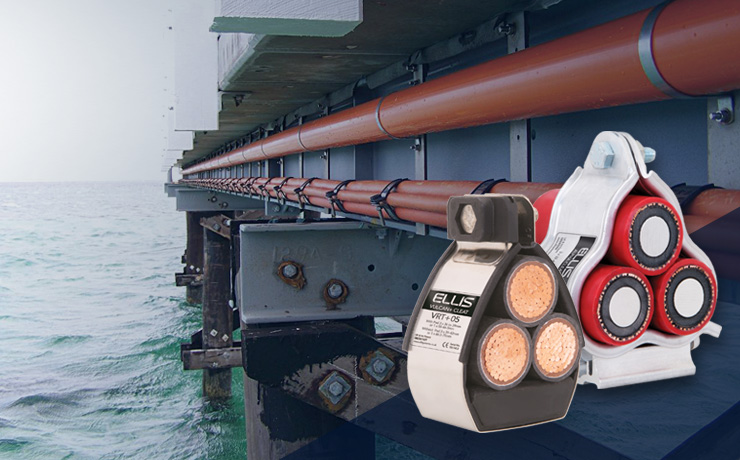
Cable cleats are safety-critical devices used in electrical installations to protect cables from excessive movement under high fault conditions. Failure to adequately protect cables in the event of a short circuit can cause damage to nearby infrastructure and have serious implications throughout the rest of your electrical system.
The relevant standard, IEC 61914 Cable cleats for electrical installations, outlines a series of tests which can be used to assess the overall performance of a cleat’s design. Although the standard does not define specific pass and fail levels, it does allow manufacturers to determine the performance characteristics of their own products and provides a framework for comparing similar products from other manufacturers. Other aspects of construction and performance and covered by IEC 61914, including:
- Material type – i.e. metallic, non-metallic or composite
- Minimum and maximum declared service temperatures
- Resistance to impact at the minimum declared operating temperature
- The ability of the cleat to withstand axial slippage forces
- Resistance to electro-mechanical forces
- Resistance to UV and corrosion
- Flame propagation
When selecting the right cable cleat for your installation it is important to understand the specifics of the cable arrangement, as a ‘one size fits all’ approach does not work.
Cable cleats can typically accommodate single, trefoil and quadrafoil cable formations and are designed to withstand electromechanical forces of up to 200kA.
IPD offer a diverse range of Ellis Patents cable cleats constructed from stainless steel, aluminium, or polymer to ensure we can meet any project specification.
How do you determine how many cable cleats you will need for installation?
Determining the number of cable cleats required to appropriately protect your installation requires a calculation of the forces between two conductors in the event of a three-phase fault. Special consideration needs to be made for the installation environment, as well as the structure that the cable is being installed on.
The Ellis Cable Cleat Calculator is a helpful tool designed to simplify product selection as well as recommended spacing to support your installation.
Need more information? Contact an IPD representative today on 1300 556 601 or customerservice@ipd.com.au